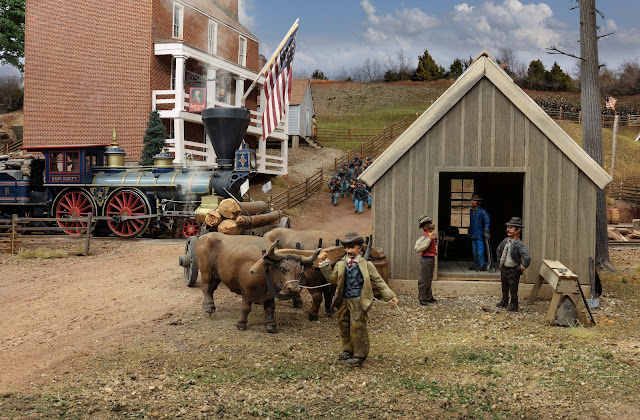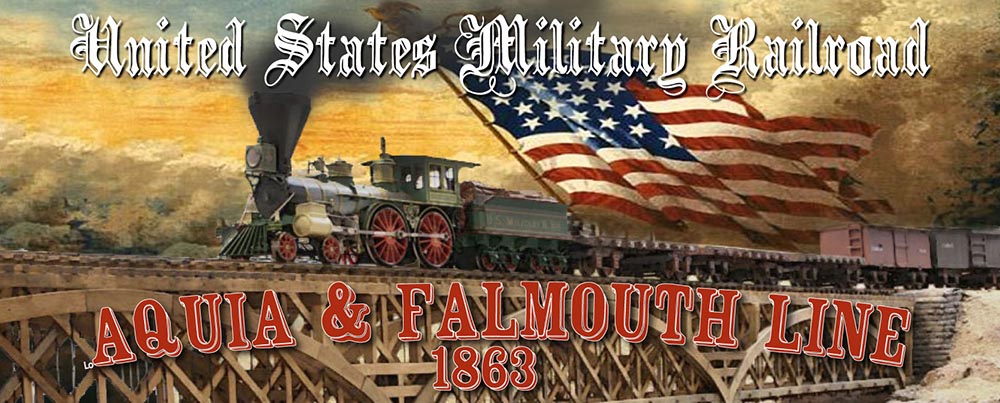 |
| The leader steers the oxen pulling a heavy wagon with logs for the saw mill |
In reading J.B. Clough's letters to Ada Anderson, one sees much discussion of the status and location of the USMRR oxen. There were several instances where units borrowed the USMRR oxen to do some task.
Oxen were the heavy haulers of the era. They had a relatively low initial cost, the ability to work long hours, used inexpensive equipment, and a lengthy lifespan. However, they were somewhat rare in the Army of the Potomac as they were not in most tables of organization for infantry, cavalry, artillery, quartermaster, etc. Instead, the Army relied on horses and mules. Thus when some heavy work was required, the Army looked to borrow the oxen of the USMRR.
An ox is actually nothing more than a specially trained dairy or beef steer that has reached the age of 5. Depending on age, sex and breed, these beasts can weigh 1,500 to 3,000 pounds and pull an amount equal to or greater than their own weight. The were, and in some places still are, the main beast of burden. In fact, the word “acre” itself was once defined as the area that one pair of oxen hooked to a single-beam walking plow could till on the longest day of the year.
This scene shows a team of USMRR oxen hauling logs to the portable sawmill at Brooke. In the background, engine Haupt drifts into town for a station stop.

No comments:
Post a Comment